Lockout Tagout Toolbox Talk – [Quick & Easy Updated for 2023]
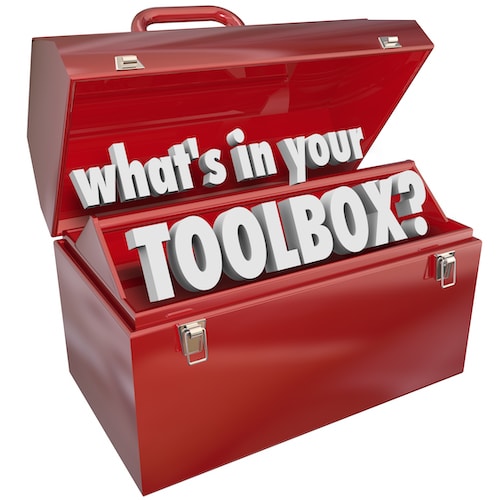
Servicing electrical equipment and electrically powered machinery is an inherently dangerous undertaking. Moving equipment that is not properly disconnected from its source of energy prior to maintenance can cause life-changing injury. Even the blink of an eye can be too late to react when a dangerous apparatus unexpectedly turns on during servicing.
Any person who repairs machinery or performs maintenance on a job site must first be trained to follow proper lockout procedures on the equipment prior to conducting the repairs. These safety steps vary depending on the specific equipment involved; however, they are tremendously important to protect the personal safety of everyone on the site.
Follow this lockout tagout toolbox talk as a guide on how to properly perform Lockout Tagout prior to beginning maintenance work on machinery. This information complements our full lockout tagout safety video and offers employees a great overview of safety, when it comes to hazardous energy.
What Are Lockout Tagout Safety Procedures?
“Locking” or “tagging” procedures refer to the steps employees must take to completely shut off a machine’s energy source before conducting any cleaning, repairs, or maintenance work. Lockout Tagout (LOTO) is performed to negate the risk of an accidental release during the servicing, which could potentially result in serious injury or even death.
When it comes to LOTO safety, control is the name of the game. The technician working on the apparatus must be in control at all times, which includes regulating the flow of hazardous energy by fully shutting down every source that powers the machine. We do have a step-by-step lockout tagout procedure article that you should check out as well.
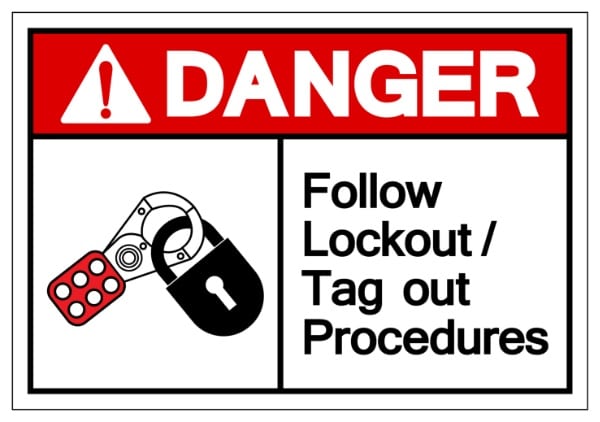
Why is Lockout Tagout Important?
LOTO guidelines exist to protect employees on a job site from serious harm due to moving equipment suddenly turning on during servicing. Failure to perform LOTO can result in electrocutions, amputations, other critical injuries, or even death.
LOTO also ensures that everyone working at a job site is on the same page about what’s going on with a given piece of equipment. One keep component of understanding your training needs, is to understand exactly when lockout tagout is required. Providing your employees with training on this important topic should be a cornerstone of your safety training program.
When Should Lockout Tagout Be Performed?
Lockout Tagout needs to be executed before any and all maintenance, cleaning, or repair work is done on any moving equipment on the job site. Even a quick or minor repair necessitates proper lockout protocols.
Lockout Tagout Checklist for a Maintenance or Repair Operation
Here is a list of steps to be taken before conducting any repairs, maintenance, or cleaning of a piece of equipment. Specific LOTO protocols will vary depending on the type of machine involved.
Notify Fellow Employees
Your first step before initiating Lockout Tagout procedures should be to inform your fellow workers that you’re about to shut the equipment down. Make sure everyone who uses the machinery knows that you’re going to turn it off for maintenance. LOTO protocols should be properly explained to every worker who might operate the apparatus over the course of the work day.
Keeping everyone at the job site on the same page is one of the most important safety steps out there because it lowers the risk of accidents occurring as a result of ignorance or lack of information about a given situation.
Shut Down Equipment
Use normal shut down procedures to turn off the equipment. This might include parking the machine, turning off the ignition, and disconnecting the power source.
Manage the Energy Source
Control any potentially hazardous energy by shutting off all the energy to the machine. Use all appropriate lockout, tagout, or alternative measures identified for the specific machinery you are working on. This may include locking or tagging out the ignition and other devices on the equipment that are responsible for isolating energy.
Any stored energy should be released or restrained before servicing the apparatus. This is generally accomplished through grounding or blocking the energy.
Test the Equipment
Before conducting the scheduled maintenance, repair, or cleaning, make sure to test the machine to be certain the energy has been isolated. This is one of the most overlooked steps in LOTO protocol, and it’s one of the most crucial. Failure to test the machinery could result in grievous injury if the LOTO steps weren’t executed perfectly.
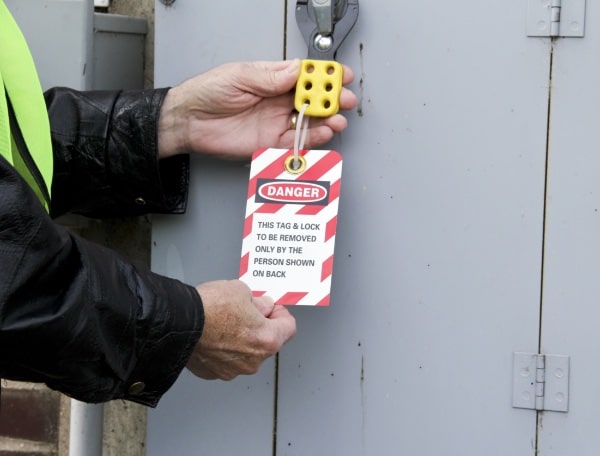
Steps to Prevent Accidental Injury from Moving Machinery
Anyone responsible for using a given piece of machinery must be fully trained on that machine’s LOTO protocols. Taking the following precautions will help to mitigate the risk of injury as a result of an improper procedure or failure to conduct the correct Lockout Tagout step.
Be Aware of Potential Hazards
Any possible dangers associated with the equipment must be understood before LOTO is carried out. These may include obstructions around the job site, water on the floor, and any potentially hazardous damage the machine has incurred. Address all spills, unnecessary cordage, and other tripping hazards and electrocution risks in the area before proceeding.
Awareness also means knowing the various types of energy that could present a hazard to you while you work, including:
- Electric
- Gravity
- Water
- Steam
- Hydraulic
- Pneumatic
Make sure you understand the dangers associated with each energy source present in the work area.
If the apparatus isn’t working correctly, make sure to communicate the issue to a supervisor and anyone who may come into contact with it. Faulty devices should be labeled with appropriate signage to dissuade use.
Ensure all necessary work permits have been obtained, and keep a record or log of any issues with the machines and all maintenance that occurs, including the names of the people who worked on each apparatus.
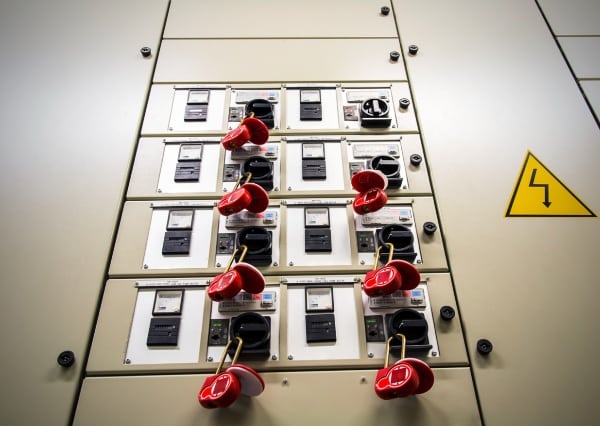
Restrict Access to Dangerous Machinery
Only people who have been specifically trained to work on the machine should be allowed to operate it. This includes being fully informed of the LOTO protocols for that particular apparatus.
Access to any job site that contains dangerous electrical machinery should be restricted to persons who are trained and authorized to be there. Everyone at the site should be aware of all hazards present.
Never remove a tag from a machine without being specifically authorized to do so. Control the access to keys at all times, and keep craft lock keys contained in a lockbox or other secure storage container when not being used.
Moving Equipment Requires Strict Safety Procedures
Injuries are unfortunately common on job sites that involve moving machinery and can be grievous depending on the type of apparatus involved and the energy source it uses for power. Many such accidents could be prevented if proper safety protocols, including this logout system, are followed.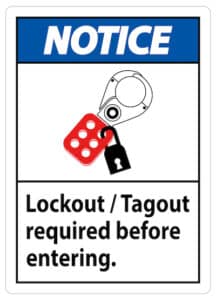
Remember, communication is very important when it comes to enacting LOTO guidelines on a job site. Everyone in the work area needs to be on the same page to ensure nobody will be standing in the wrong place if the machine accidentally switches on. Any faulty or malfunctioning equipment needs to be identified immediately and addressed by a trained professional.
Before cleaning, repairing, or otherwise servicing a dangerous apparatus, don’t get caught by surprise because you failed to make sure it was properly shut off. Follow LOTO protocols every time, no matter how small the maintenance job might seem. It’s the only way to keep yourself and everyone else on the job site safe from potential hazards caused by improperly grounded energy or out-of-control machines.
Using a Lockout Tagout
A Lockout Tagout system covered in these toolbox talks is a strong line of defense for workers, maintenance crews, and operators to ensure safety at work. Refer back to this lockout tagout toolbox talk to review relevant procedures and lower the risk of injury while at work.